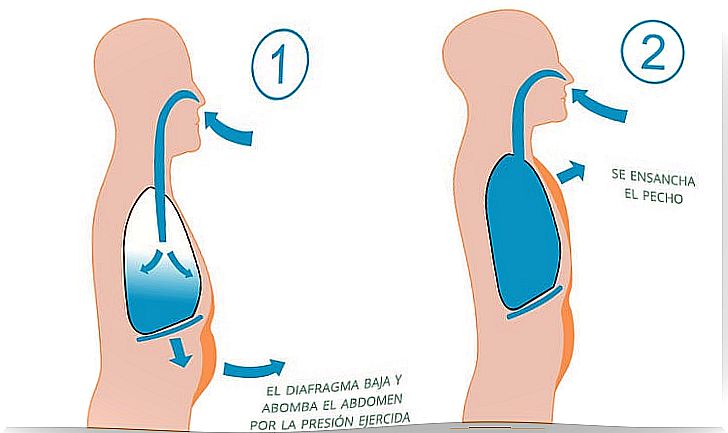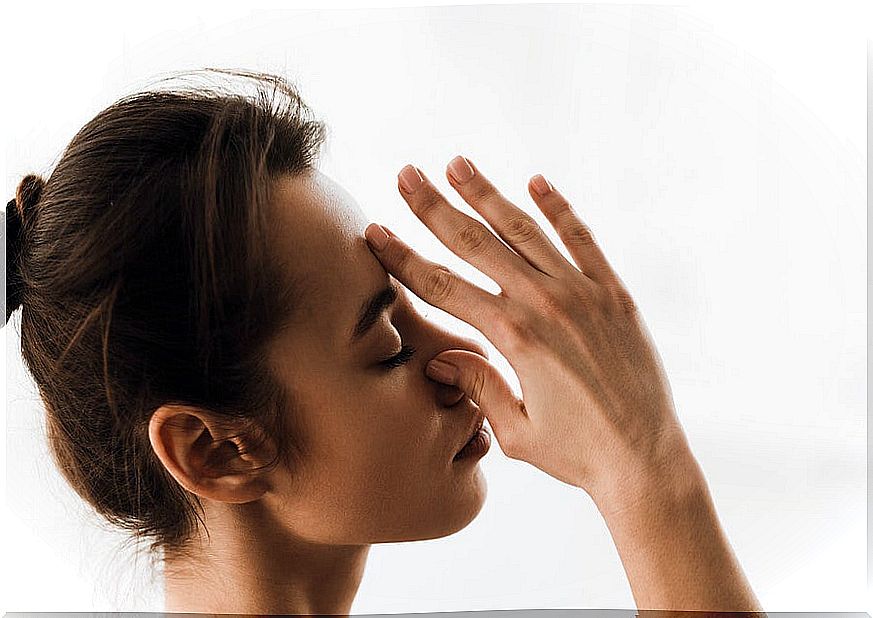Discover These 4 Breathing Techniques To Combat Stress. Very Effective!
Surely at some point you have experienced a situation of stress or anxiety on more than one occasion. In addition, you have most likely also noticed that, in those situations, you breathe in an accelerated and uneven manner. And is not for less. That is why you may be looking for breathing techniques.
Stress and anxiety are coping mechanisms. They are intended to help us avoid a situation that the brain interprets as harmful or dangerous. It should also be remembered that the response of the sympathetic nervous system to these feelings can be very intense.
Not for pleasure, in those situations, the heart races, the pulsations increase and we breathe irregularly. It seems logical then that the risk of suffering, among many other conditions, heart attacks, angina pectoris and cerebrovascular accidents increases.
But have you ever wondered why? It should be remembered that bad breath can result in our organs not getting the oxygen they need to function properly. This situation is also stressful for the body almost always leaves consequences. Especially when such situations persist for a long period of time.
At that point, it is imperative to stop in order to analyze what is happening to us to find possible solutions. The need to better manage emotions will then prevail.
Breathing correctly could be another very useful resource for reducing stress. So here are 4 techniques that could help you reach the goal of learning to breathe better.
1. Breathing techniques: square breathing
Square breathing is the simplest of all breathing techniques. It is also known as samavriti pranayama. You could do it in bed, 20 minutes before sleeping. It will help you relax and rest deeply.
Steps:
- Sit on the bed with your back straight and your legs crossed.
- Breathe deeply for 3 minutes trying to relax.
- Now, breathe in for 3 seconds, hold the air for another 3 seconds. And finally, breathe out for another 3 seconds.
- After a short rest, repeat the same steps, increasing the duration of these intervals to 4 seconds.
To the extent that you make this routine of breathing exercises a habit, you can increase the time between each step until you reach 7 seconds or 8 seconds.
2. Breathing techniques: abdominal breathing

With square breathing, what you do is inflate your chest. Now, the goal of abdominal breathing is to focus the breath on the diaphragm. This is a very effective technique for dealing with stress, pent-up tension, and anxiety.
Steps:
- Lie on the bed or on a comforter comfortably.
- Place one hand on your chest and one on your belly.
- Breathe in deeply through your nose for about 3 seconds. You will notice how your belly swells while the upper area of your chest is stretched.
- Then exhale little by little, for about 4 seconds.
The ideal would be to perform this routine 10 times. Try to do them very slowly. Imagining how the diaphragm moves will help you focus on this breathing exercise.
3. Alternate nasal breathing

Alternate nasal breathing may seem strange to us if we have never practiced it. Therefore, the ideal is to practice it a little every day. You will progressively notice its benefits. When you get used to it, you will notice not only that it will help you channel and release stress. Also, to direct your attention solely to what you are doing.
Steps:
- Sit in a way that makes you comfortable. Make sure, however, that the back is straight.
- Relax for a few minutes.
- Bring your right thumb towards your nose to cover the right nostril.
- Take a deep breath through your left nostril.
- When you feel that your lungs have filled to the point that it is impossible to breathe in more air, close the left nostril with the right ring finger.
- Exhale through the right nostril.
- Do the same again but in reverse. That is, once you have taken in as much air as possible with the right nostril, close it and exhale through the left nostril.
It is possible that, at first, it seems somewhat complicated. In all probability, you will have to be aware of plugging one pit and opening the other. However, as you repeat it, the exercise will become more rhythmic and relaxing.
4. Consistent breathing
Consistent breathing also takes practice and patience. We invite you to try it always, adapting it to your abilities and personal characteristics. When you have managed to control it, you will feel more comfortable with yourself and your whole body will thank you.
Consistent breathing consists of breathing 5 times per minute. In this way, the heart rate is optimized and this can help to relax the nervous system. It is an effective way to channel accumulated tensions in situations of stress and anxiety. Practicing it will be of great help.
Steps:
- Sit up straight.
- Put a clock in front of you.
- The goal is to breathe in and out 5 times in a single minute. However, it is recommended that you first test your ability to control your breathing. If you find that you cannot distribute them over 1 minute, start by taking 6 or 7 breaths in and out.
- However, when you manage to distribute them in just 1 minute, you will see that you feel much better.
Remember: breathing well is equal to living better. That is why we recommend that, if you find it difficult to breathe often, you consult a doctor about what may be happening to you.








